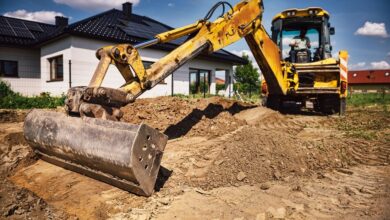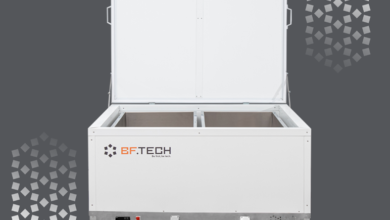Chipperen: A Comprehensive Guide to a Versatile Technique in Construction and Technology

In recent years, the term “Chipperen” has gained prominence in various fields, from construction to sustainable materials and even technology. This versatile term encompasses different techniques and innovations, each contributing uniquely to its industry. In this article, we’ll delve into the multifaceted concept of Chipperen, exploring its applications, benefits, and prospects across these diverse domains.
The Origin and Evolution of Chipperen in Construction
Chipperen, in the realm of construction, refers to a specific technique used to enhance the aesthetic appeal of brick facades. The method involves applying a thin layer of special mortar over a brick wall, exposing portions of the bricks to create a textured, nuanced surface. This method was popularized by the British architect David Chipperfield, who utilized it in various projects to achieve a dynamic and evolving appearance on building exteriors.
How Chipperen Works in Construction
Chipperen begins by carefully spreading mortar across the brick surface. The mortar is typically applied in varying thicknesses, allowing the underlying brick structure to peek through certain areas. The result is a wall that appears to change with the light and weather conditions, offering an understated and visually intriguing unique aesthetic.
Chipperen is not limited to new constructions; it can also be applied to older buildings, providing a modern facelift while preserving the structure’s historical integrity. The versatile technique can be customized to suit different design needs, whether creating patterns, highlighting specific architectural features, or simply adding a touch of sophistication to a plain wall.
Benefits of Chipperen in Construction
One of Chipperen’s critical advantages in construction is its capacity to meld contemporary and classic styles with ease. The technique can rejuvenate old structures, giving them a fresh and modern look while maintaining their original character. This makes Chipperen an ideal choice for restoration projects that enhance the building’s aesthetic appeal without compromising its historical significance.
Additionally, Chipperen offers flexibility in design. Architects and builders can experiment with different mortar thicknesses, textures, and application techniques to achieve the desired effect. Whether it’s a subtle, minimalist look or a bold, textured finish, Chipperen provides endless possibilities for creativity.
Furthermore, the technique is environmentally friendly, often using existing materials rather than requiring new resources. This fits perfectly with the expanding sustainability trend of reducing waste and minimizing environmental impact.
Chipperen as a Sustainable Material: A New Era in Construction
Beyond its role as a construction technique, Chipperen has also emerged as a sustainable composite material, with growing acceptance as an environmentally friendly replacement for traditional building materials like concrete and steel. This new form of Chipperen is made from recycled wood chips and resins, offering a durable, versatile, and environmentally responsible solution for modern construction needs.
The Production Process of Chipperen Material
The production of Chipperen material begins with the collection of wood waste, primarily sourced from sawmills and construction sites. These wood chips are cleaned, processed, and mixed with specially formulated resins to create a robust composite material. The resulting product is lightweight and strong and may be moulded into various sizes and forms, making it appropriate for multiple construction applications.
Environmental Benefits of Chipperen Material
One of the most significant advantages of Chipperen as a material is its positive environmental impact. The construction industry is notorious for its high levels of waste and carbon emissions, with traditional materials like concrete and steel contributing significantly to greenhouse gas emissions. Chipperen offers a sustainable alternative by utilizing recycled wood waste, reducing the need for new timber, and lowering carbon footprints.
Moreover, the production of Chipperen requires less energy than conventional materials. The use of recycled wood chips not only minimizes waste but also helps reduce deforestation, promoting a circular economy. By incorporating Chipperen into construction projects, builders can help preserve forests and encourage sustainable development goals.
Durability and Versatility of Chipperen Material
Chipperen is environmentally friendly and boasts impressive durability and performance characteristics. The combination of wood chips and resins creates a material resistant to moisture, pests, and fire, making it suitable for indoor and outdoor applications. Its high tensile and compressive strength allow it to be used in load-bearing structures, while Its low weight facilitates handling and transportation, reducing construction time and labour costs.
Another essential element propelling its uptake in the construction industry is its versatility. It can be used in various applications, from wall panels and cladding to flooring, furniture, structural components, and roofing. This wide range of uses makes Chipperen a valuable material for residential, commercial, and industrial projects.
Chipperen in Technology: Enhancing Performance and Efficiency
In the world of technology, Chipperen takes on a different meaning. It refers to a technology that uses tiny integrated circuits or chips. These chips are embedded in various electronic devices to enhance their performance, energy efficiency, and functionality. Chipperen technology is a cornerstone of other essential elements propelling its uptake in computers, smart home devices, and automotive systems.
How Chipperen Technology Works
Chipperen technology integrates advanced chips into electronic devices designed for specific duties and purposes. For example, Chipperen chips may handle data processing, manage battery life, and enhance the camera’s capabilities in a smartphone. These chips are programmed with software to communicate with other device components, ensuring seamless operation and improved user experience.
Applications of Chipperen Technology
Chipperen technology is used in a wide range of applications, including:
- Smartphones and Tablets: Chipperen chips are essential in modern smartphones and tablets, enabling faster processing, better graphics, and enhanced features such as cameras and connectivity options.
- Computers and Laptops: Chipperen technology improves processing speed, graphics performance, and overall system efficiency, resulting in a more productive and enjoyable computing experience.
- Smart Home Devices: Chipperen chips are also integral to smart home devices, allowing them to process voice commands, control home appliances, and provide real-time monitoring and alerts.
- Automotive Industry: Chipperen chips are used in infotainment systems, navigation, and advanced driver-assistance systems (ADAS), helping drivers make safer decisions on the road.
- Healthcare and Medical Devices: Chipperen technology is making significant strides in healthcare, with chips embedded in diagnostic equipment, wearable health monitors, and innovative implants to carry out challenging jobs precisely and accurately.
The Future of Chipperen Technology
As technology continues to evolve, Chipperen’s future looks promising. Researchers and engineers constantly develop more advanced and efficient chips to perform even more complex tasks. This involves combining machine learning with artificial intelligence capabilities into Chipperen chips, enabling devices to learn and adapt to users’ needs over time.
The Internet of Things (IoT) is another area where Chipperen technology is expected to play a significant role. As more devices connect to the Internet, the demand for efficient and powerful chips will increase. Chipperen technology will be crucial in ensuring smooth communication between these devices and that they perform their intended functions effectively.
Challenges and Future Prospects of Chipperen
Despite its numerous advantages, Chipperen faces challenges in its construction and technology applications. One of the primary challenges in the construction industry is achieving widespread acceptance and adoption of the Chipperen technique and material. With comprehensive performance data and real-world case studies, builders and developers may be able to switch to new materials or methods.
In the technology sector, the increasing complexity of chip design and manufacturing presents its challenges. As chips become more advanced, designing and producing them becomes more intricate and costly, requiring significant investment in research and development, as well as specialized equipment and expertise.
Nevertheless, Chipperen’s prospects are bright. With ongoing research and development, Chipperen has the potential to become a cornerstone of sustainable construction and advanced technology. Its eco-friendly attributes, durability, versatility, and cost-effectiveness make it an appealing option for contemporary building projects. At the same time, its ability to enhance the performance and efficiency of electronic devices ensures its continued relevance in the tech industry.
Conclusion
Chipper is a multifaceted term that embodies innovation, sustainability, and efficiency across different industries. Whether as a construction technique, a sustainable material, or an advanced technology, Chipperen represents a significant step forward in the quest for better building practices and more intelligent devices. As the construction and technology industries continue to evolve, embracing Chipperen will be essential in building a more sustainable, efficient, and connected future.
You May Also Read: OpenHousePerth.net Donations: Supporting Community Engagement and Heritage Preservation



